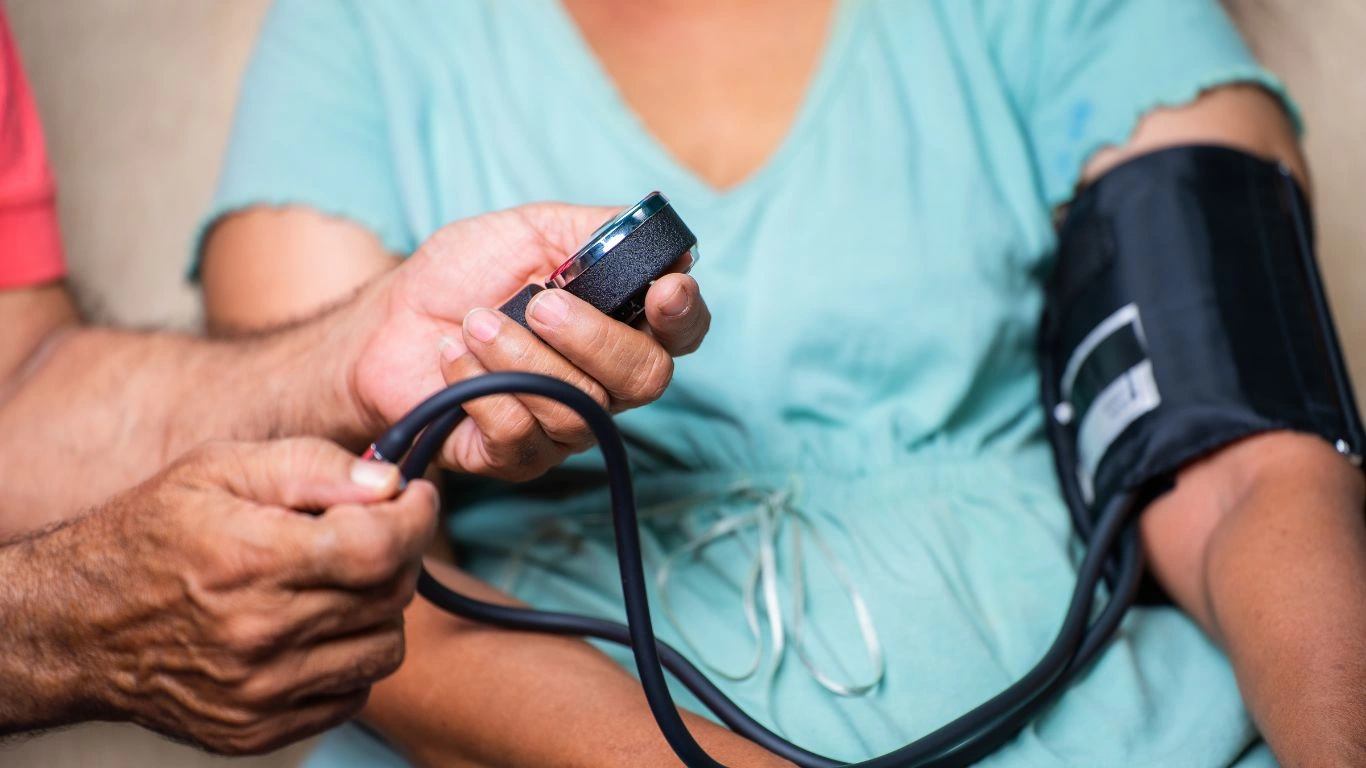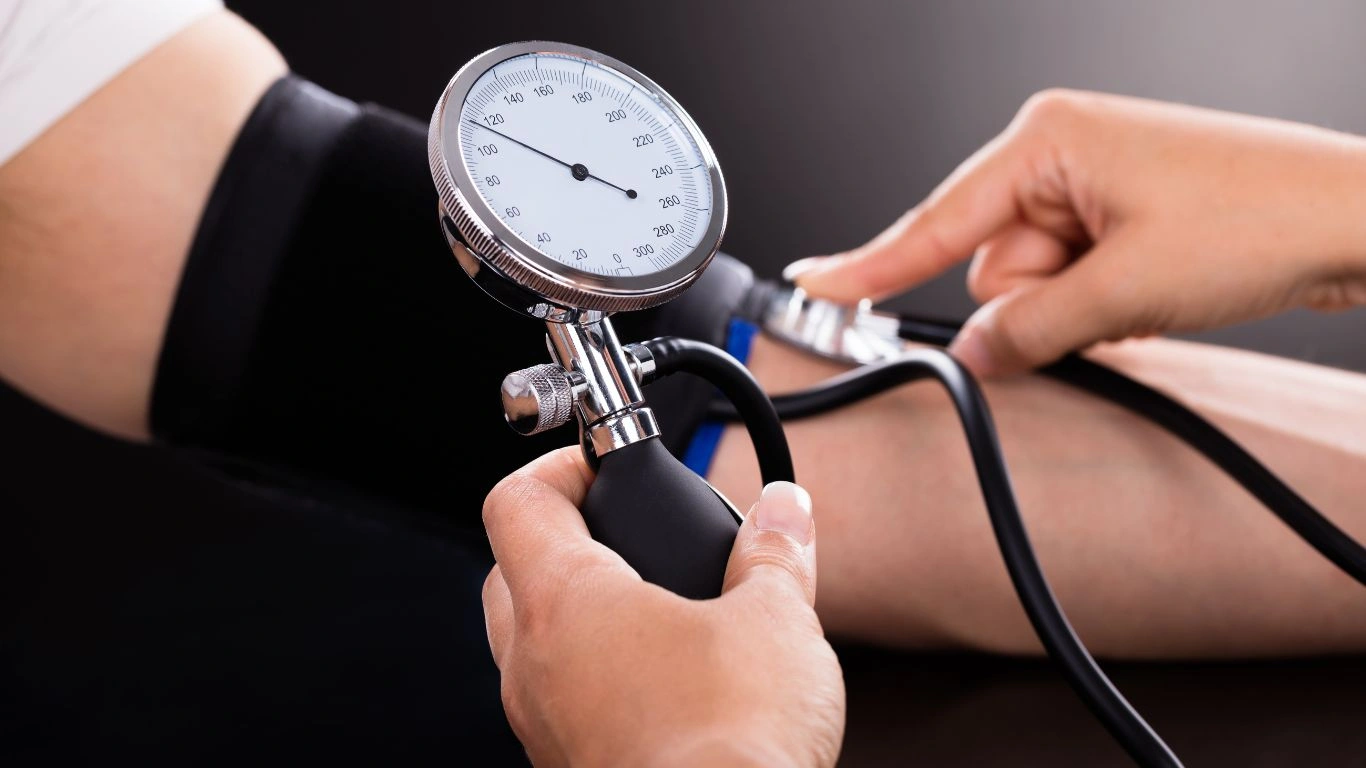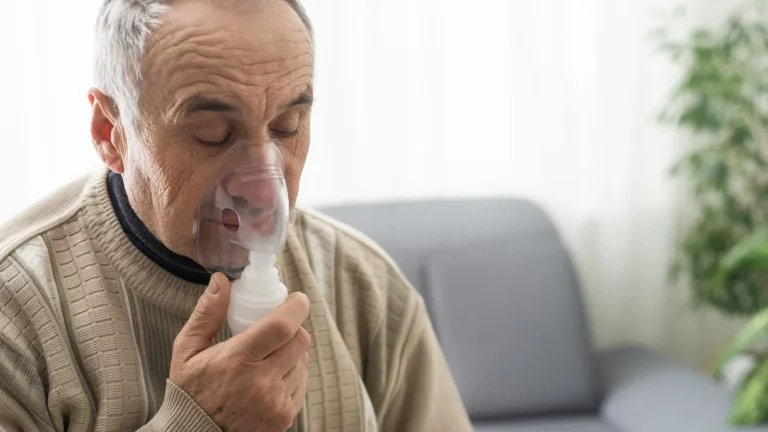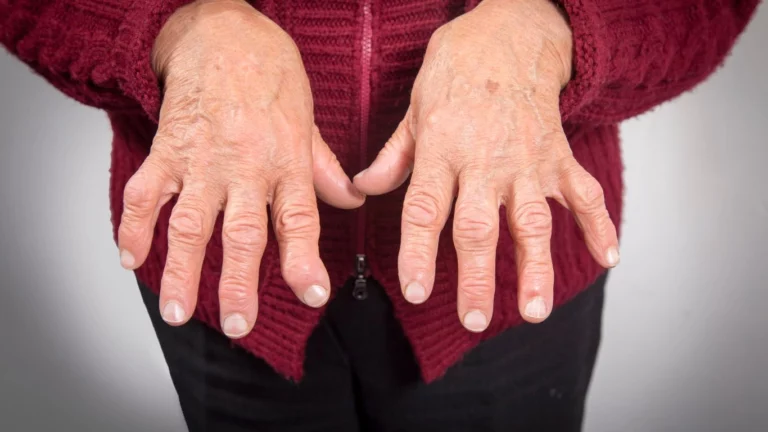Managing Hypertension with Low-Impact Yoga: A Powerful Way to Lower Your Blood Pressure Naturally
Managing hypertension with low-impact yoga is becoming an increasingly popular option for those looking to control their blood pressure in a natural, calming way. As someone who has spent years researching and treating hypertension, I’ve seen firsthand how effective it can be. Hypertension, or high blood pressure, affects millions of people around the world, and with the rising stress of modern life, it’s more important than ever to find manageable ways to address it. In this blog, I’ll share some insights into how low-impact yoga can make a big difference in managing hypertension, drawing from both my expertise and personal experiences.
Understanding Hypertension: Why It’s a Problem
Before we dive into the specifics of how yoga can help, let’s take a quick look at what hypertension is and why it’s so important to manage it. Hypertension is often referred to as the “silent killer” because it usually has no obvious symptoms, but over time, it can damage your heart, blood vessels, kidneys, and other organs. The risk of stroke, heart disease, and kidney failure increases significantly when hypertension goes unmanaged.
One of the most concerning things about hypertension is that many people don’t even realize they have it. That’s why regular blood pressure checks are crucial. The good news, however, is that high blood pressure is largely preventable and manageable with lifestyle changes like diet, exercise, and stress management. Yoga, particularly low-impact styles, can play a significant role in all of these areas.
How Yoga Helps with Blood Pressure
Yoga is more than just a physical practice; it’s a mind-body approach that can help reduce stress and promote relaxation, both of which are key contributors to high blood pressure. By focusing on controlled breathing, gentle movement, and mindfulness, yoga encourages a calm, balanced state of being. This balance can directly impact your blood pressure by lowering stress hormones like cortisol and adrenaline, which are known to increase blood pressure when left unchecked.
In my experience, many of my patients have found significant relief from hypertension after incorporating yoga into their routine. It’s a non-invasive, gentle way to manage a potentially life-threatening condition. And unlike some high-impact exercises, low-impact yoga poses are accessible to people of all ages and fitness levels, making it a great option for those who may not be able to engage in more intense activities.
What Exactly Is Low-Impact Yoga?
Low-impact yoga refers to gentle, slow-paced yoga styles that focus on stretching, strengthening, and breathing exercises without putting too much strain on the body. These types of yoga are particularly suitable for individuals with hypertension because they don’t put unnecessary stress on the heart or muscles. Common examples of low-impact yoga styles include Hatha, Restorative, and Iyengar yoga.
The beauty of low-impact yoga lies in its ability to foster relaxation without overexertion. Some of the poses focus on improving flexibility and blood flow, which helps lower blood pressure over time. Moreover, deep, conscious breathing is a fundamental part of these practices, which helps activate the parasympathetic nervous system—the part of your nervous system that promotes a state of calm.
The Best Low-Impact Yoga Poses for Hypertension

Now that we understand how yoga can help, let’s talk about some of the best low-impact yoga poses specifically for managing hypertension. These poses will help open up your body, release tension, and improve circulation—all key factors in lowering blood pressure.
1. Child’s Pose (Balasana)
Child’s Pose is one of the most restorative and calming poses in yoga. It helps stretch the lower back, hips, and thighs while promoting a sense of relaxation. By lowering your head below the level of your heart, you encourage blood flow to your brain and enhance circulation. This pose also encourages deep, slow breathing, which can help activate the parasympathetic nervous system, lowering stress and blood pressure.
2. Seated Forward Fold (Paschimottanasana)
This gentle forward fold stretches the entire length of the back and the hamstrings while promoting calmness. Seated Forward Fold helps release tension in the body, particularly in the spine and the neck. It can also help lower blood pressure by encouraging deep, mindful breathing and improving circulation throughout the body.
3. Legs Up the Wall (Viparita Karani)
Legs Up the Wall is a deeply restorative pose that can significantly help reduce stress and promote relaxation. By elevating your legs, you encourage circulation to the heart and brain, which can improve cardiovascular health. This pose is particularly helpful in reducing feelings of anxiety, which can contribute to high blood pressure.
4. Corpse Pose (Savasana)

While Corpse Pose may seem simple, it is one of the most important yoga poses for reducing hypertension. It involves lying flat on your back with your eyes closed, focusing on your breath and letting your body relax completely. This pose can lower your blood pressure by allowing your body to enter a deep state of relaxation. It’s also the perfect way to end a yoga session, giving you the space to reset both physically and mentally.
Breathing Techniques: The Power of Pranayama
In addition to the physical poses, one of the most effective aspects of yoga for hypertension is its focus on breathing techniques, known as pranayama. Controlled, slow breathing has been shown to lower blood pressure, reduce anxiety, and improve overall heart health. Pranayama involves various techniques, such as alternate nostril breathing (Nadi Shodhana), which can be particularly helpful in calming the nervous system.
When we practice pranayama, we actively slow our heart rate and focus on deep, even breaths. This process encourages relaxation, which can lower levels of stress hormones in the body and help regulate blood pressure. It’s one of the easiest and most powerful tools in yoga to help manage hypertension naturally.
Why Consistency is Key
As with any form of exercise, consistency is key when it comes to managing hypertension with low-impact yoga. It’s not just about practicing for a few days or weeks and expecting to see results. You need to integrate yoga into your lifestyle on a regular basis to truly experience its benefits. Try to incorporate yoga into your routine at least three to four times a week, starting with short, 20-minute sessions and gradually building up.
Incorporating Yoga into Your Daily Life

Yoga doesn’t have to be a time-consuming or overwhelming activity. Even a few minutes of stretching, breathing, and mindfulness each day can go a long way in lowering your blood pressure and improving your overall health. Whether you practice in the morning to start your day or in the evening to wind down, making yoga a part of your daily routine can help keep hypertension in check.
The Science Behind Yoga and Blood Pressure
Yoga’s positive effect on blood pressure isn’t just anecdotal—there’s actually science behind it. Studies have shown that regular practice of yoga can lower both systolic and diastolic blood pressure in individuals with hypertension. This happens through a combination of physical postures, breathing techniques, and meditation.
One key factor is the way yoga reduces the body’s stress response. When we practice yoga, our heart rate slows down, and our blood vessels dilate, which in turn lowers blood pressure. This happens as a result of the relaxation response, which is triggered by the deep, slow breathing patterns in yoga. This physiological response helps balance the body’s fight-or-flight response, ultimately supporting a healthier heart.
In my experience, many of my patients have shown consistent improvements in their blood pressure after practicing yoga regularly. Of course, yoga isn’t a quick fix, and it’s not a substitute for medical treatment when necessary, but it’s an excellent complementary practice for long-term hypertension management.
Benefits of Combining Yoga with Other Lifestyle Changes

When it comes to managing hypertension, no single approach works in isolation. The best results come from combining multiple lifestyle changes that work together. Yoga, when paired with a healthy diet, regular physical activity, and stress management techniques, can be a powerful tool in managing your blood pressure.
For example, incorporating heart-healthy foods such as fruits, vegetables, and whole grains can help keep blood pressure levels in check. Reducing sodium intake and avoiding processed foods are also important steps in managing hypertension. When you pair this with regular yoga practice, you’re addressing both the physical and mental aspects of hypertension.
In addition, yoga’s focus on mindfulness can help improve your relationship with food. It encourages being present in the moment, which can reduce overeating and emotional eating—two behaviors that can lead to weight gain and high blood pressure. I’ve seen this firsthand in my practice, where patients have reported feeling more connected to their bodies and more mindful about their food choices after they started incorporating yoga into their routines.
Yoga for Stress Reduction: A Key Component in Hypertension Management
Stress is one of the leading contributors to high blood pressure. We all experience stress, but the way we manage it plays a huge role in our overall health. Yoga is a fantastic tool for reducing stress, and it’s not just about the physical poses; it’s about learning to breathe deeply and focus your mind in a calm and controlled way.

When stress levels are high, your body releases stress hormones like cortisol and adrenaline. These hormones cause your heart rate to increase, and your blood pressure rises. In the long term, chronic stress can lead to hypertension. Yoga, with its focus on relaxation, helps counteract this process. By engaging in deep breathing exercises and focusing on calmness, yoga can significantly lower cortisol levels in the body, helping you manage stress more effectively.
One of the most valuable things yoga has taught me personally is the power of breathwork. In moments of stress or anxiety, I find myself returning to deep, mindful breathing, and I can feel my body relax. This practice can be incredibly helpful for anyone with hypertension, especially since it’s a simple, accessible way to reduce stress throughout the day.
The Role of Yoga in Improving Sleep for Hypertension
Sleep is another crucial factor in managing hypertension, and yoga can play a major role in improving sleep quality. Research shows that poor sleep or insufficient sleep can raise blood pressure, increase the risk of heart disease, and contribute to overall stress. Yoga can help improve the quality of your sleep by promoting relaxation and reducing anxiety.
Certain yoga poses, especially those that focus on stretching the spine, calming the mind, and releasing tension in the body, are great to practice before bed. Gentle poses like Child’s Pose and Legs Up the Wall, or a brief session of deep breathing exercises, can prepare your body and mind for restful sleep.
In fact, I’ve seen patients who struggled with insomnia begin to experience improved sleep after adopting a nightly yoga routine. Better sleep means less stress and better blood pressure regulation—making it a win-win for anyone managing hypertension.
Creating a Consistent Yoga Practice for Hypertension Management
One of the most important aspects of managing hypertension with yoga is consistency. It’s not enough to practice yoga once or twice and expect immediate results. To truly experience the benefits, it’s crucial to make yoga a regular part of your lifestyle.
Start small and gradually increase your practice. For beginners, 15-20 minutes of yoga a few times a week can yield noticeable results. As you get more comfortable, you can increase the duration of your sessions and explore more advanced poses. Keep in mind that yoga doesn’t need to be a high-intensity workout. In fact, gentler styles are often more beneficial for hypertension management.
It’s also important to find a yoga style and routine that works for you. Some people prefer solo practice at home, while others may enjoy attending a class or following an instructor online. Either way, what matters most is that you’re engaging in a practice that feels good for your body and supports your goals for better health.
Creating a Balanced Routine
To create a balanced yoga routine, I recommend incorporating a combination of the following elements:
- Gentle stretches: Focus on poses that stretch and relax your muscles, like the Seated Forward Fold or Cat-Cow Pose.
- Breathing exercises: Include pranayama practices such as Ujjayi Breath or Nadi Shodhana to activate the parasympathetic nervous system.
- Relaxation poses: End each session with a calming pose like Savasana to help reduce stress and promote relaxation.
The key is to maintain consistency and to listen to your body. If something doesn’t feel right, there are always modifications you can try. Yoga is all about personalizing the practice to suit your unique needs, and that’s why it’s such a great tool for managing hypertension.
Yoga for Hypertension: A Lifelong Journey
When it comes to managing hypertension, yoga is not a quick fix—it’s a lifestyle change. As someone who’s worked in this field for years, I can tell you that treating high blood pressure requires more than just one intervention. It’s about creating a consistent, sustainable routine that addresses both the body and mind. Yoga, in particular, has the unique ability to target both physical and mental aspects of health, which is why it’s so effective in managing hypertension.
Yoga’s focus on mindfulness, breath control, and gentle movements makes it ideal for those who are looking for a low-impact exercise routine. But what really makes it stand out is the way it helps you develop a sense of connection with your body. That connection is essential for those of us dealing with hypertension, as it encourages us to slow down, be mindful of our health, and engage in practices that help reduce stress.
Combining Yoga with Modern Medicine: A Powerful Approach

In my practice, I always emphasize that yoga should not replace medical treatment when it comes to hypertension management. If you’re on medication for high blood pressure, don’t stop taking it without consulting your healthcare provider. Yoga should be seen as a complementary practice—a tool to enhance your treatment plan and provide additional benefits.
When combined with conventional treatments like medication and dietary changes, yoga can significantly improve your blood pressure management. One of the biggest advantages of yoga is its ability to reduce stress, which is often a major factor in high blood pressure. Yoga, with its calming poses and breathing exercises, helps activate the parasympathetic nervous system, which counters the “fight or flight” response and keeps stress levels in check.
Incorporating yoga into a comprehensive hypertension treatment plan can also help reduce the need for increased doses of medication. By lowering stress and improving heart health, yoga helps you keep your blood pressure within a healthier range, which may allow for better overall management of the condition. This is something I’ve seen in many of my patients who use yoga alongside their prescribed treatment to stay on top of their blood pressure.
Building a Community: The Importance of Support in Hypertension Management
As with any health journey, having support makes all the difference. When you’re managing hypertension, it can sometimes feel like a lonely battle. That’s why yoga communities—whether online or in-person—can be so valuable. Connecting with others who are also using yoga to manage their health creates a sense of camaraderie and provides accountability. Plus, hearing others’ experiences can be incredibly motivating and reassuring.
Personally, I’ve found that having a yoga practice is much more enjoyable when you’re sharing the experience with others. If you’re new to yoga, consider joining a class or an online community. These groups offer support, encouragement, and guidance as you embark on your journey to better blood pressure management.
How to Stay Motivated with Your Yoga Practice
Like any lifestyle change, consistency can sometimes be the hardest part of adopting a yoga practice for hypertension. But here’s the thing—yoga doesn’t have to be difficult or time-consuming. Even just 15-20 minutes a few times a week can yield significant benefits, so don’t get discouraged if you can’t commit to long sessions every day.
One of the best ways to stay motivated is by setting realistic goals. Start small—perhaps with a daily morning stretch or a few minutes of focused breathing before bed. As you begin to notice improvements in your mood, stress levels, and overall health, you’ll likely feel more motivated to keep going. Celebrate small victories and remember that every little bit of effort counts towards managing your hypertension.
Another tip for maintaining motivation is mixing up your yoga practice. Try new poses, explore different styles, or follow new instructors to keep things fresh and exciting. You can also track your progress. Keep a journal of your blood pressure readings, yoga sessions, and how you’re feeling, both physically and emotionally. This can help you stay focused on the positive changes you’re making.
Creating a Relaxing Space for Yoga at Home

One of the best parts about yoga is that you can practice it from the comfort of your home. But creating a space that’s conducive to relaxation and focus is essential for getting the most out of your sessions. When you’re managing hypertension, it’s especially important to practice yoga in an environment that promotes calm and tranquility.
Start by choosing a quiet spot in your home where you won’t be easily distracted. Make sure the space is free of clutter, and if possible, add some calming elements, like soft lighting, candles, or soothing music. A comfortable yoga mat is also a must for any at-home practice. The more inviting and peaceful your space, the easier it will be to relax and focus on your yoga practice.
If you find it helpful, you can even incorporate aromatherapy by using essential oils like lavender or eucalyptus, which are known for their calming effects. In fact, studies have shown that the combination of yoga and aromatherapy can have a positive impact on stress reduction and blood pressure control. Creating a personalized space like this will help reinforce your commitment to your yoga practice and your overall health journey.
References & Disclaimer
References:
- Yoga for Hypertension: A Comprehensive Review of Its Efficacy
- The Effects of Yoga on Hypertension: A Meta-Analysis
Disclaimer: The information provided in this article is intended for general informational purposes only. It is not a substitute for professional medical advice, diagnosis, or treatment. Always seek the advice of your physician or other qualified healthcare provider with any questions you may have regarding a medical condition. Never disregard professional medical advice or delay in seeking it because of something you have read in this article.

Dr. Gwenna Aazee is a board-certified Internal Medicine Physician with a special focus on hypertension management, chronic disease prevention, and patient education. With years of experience in both clinical practice and medical writing, she’s passionate about turning evidence-based medicine into accessible, actionable advice. Through her work at Healthusias.com, Dr. Aazee empowers readers to take charge of their health with confidence and clarity. Off the clock, she enjoys deep dives into nutrition research, long walks with her rescue pup, and simplifying medical jargon one article at a time.






